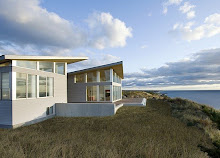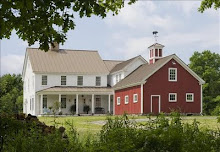Clapboard is a wholly New England building material, referred to elsewhere in America as siding. According to the book, America In So Many Words: Words That Have Shaped America by Allan Metcalf and David K. Barnhart:
"American ingenuity made something new of clapboard. In England clapboard was used for barrels; the English who became Americans learned to apply it to houses... We have a 1632 report of 'a small house near the wear at Watertown, made all of clapboards.'"
Now, modern ingenuity gives us Hardiplank - fiber cement clapboards that provide historically accurate aesthetics with green, sustainable benefits:- Durable - Is more resistant to rot, insects, and fire than wood
- Made from natural raw materials - wood pulp, cement, sand and water
- Locally produced - 10 regional manufacturing facilities
- Promotes air circulation and drainage behind cladding
- Lower maintenance - holds paint far longer than other cladding options
- Affordable - a far greener alternative than environmentally toxic vinyl siding


 Love this classic white barn-style garage.
Love this classic white barn-style garage.






























Hi Lisa,
ReplyDeleteI was psyched when I saw the Everret Street project construct a rain screen siding wall.
rain screens are a successful method for deterring rainwater intrusion into walls is the rain screen approach.
Rather than attacking the symptoms of moisture intrusion, rain screens tackle the source-the forces that drive water into the building shell.
By neutralizing these forces, rain screens can withstand extreme environments. They appear to be effective in any climate and handle any weather condition short of a disaster.
Great blog! ROB Robillard
Hi Rob.
ReplyDeleteThank you for your comments, and for further highlighting the benefits of rain screens under exterior cladding.
Here is a great article on drainage planes from a source that I know our architects trust:
http://www.buildingscience.com/documents/information-sheets/3-water-management-and-vapor-control/drainage-plane-water-resistive-barrier/?searchterm=drain%20screen